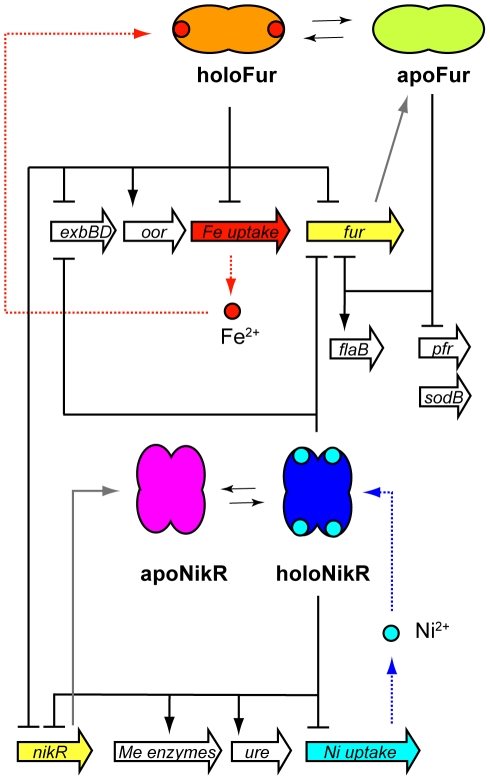Figure 4. The metal homeostasis origon.
Fur regulates transcription of metal transporters and siderophores (e.g., frpB and fecA paralogues), which need to be repressed upon iron repletion [66]–[68], as well as detoxifying genes that need to be promptly derepressed under the same Fe2+ replete conditions (e.g., pfr bacterioferritin and sod superoxide dismutase) [69], [70]. Fur generally acts as repressor, but it may also act positively on transcription on certain genes (flaB, oor) [74]. Similarly, NikR can act as positive or negative regulator of transcription, according to the position of the operator elements [79], [80]. With respect to the promoter, binding upstream appears to induce transcription of the ureAB operon in cultures grown in Ni2+ replete cultures [64]. Conversely, binding within the core promoter represses transcription, as shown for the fecA3 and frpB4 genes, encoding outer membrane proteins [68], [103], [105], the nixA permease gene [106], and the exbBD-tonB operon, that is involved in energization of outer membrane transport complexes involved in metal uptake [107], and itself part of the Fur regulon [74], [75], [81], [104]. Note that both Fur and NikR are autoregulated, and that they control reciprocally their transcription levels, through direct binding to their respective promoters [81]. Several operons such as exbBD-tonB are under the control of both Fur and NikR.

